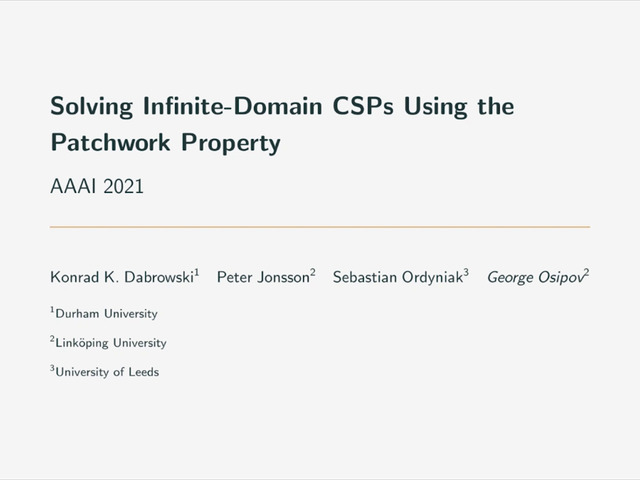Abstract:
The HYBRID model, introduced in [Augustine et al., SODA ’20], provides a theoretical foundation for networks that allow multiple communication modes. The model follows the principles of synchronous message passing, whereas nodes are allowed to use two fundamentally different communication modes. First, a local mode where nodes may exchange arbitrary information per round over edges of a local communication graph G (akin to the LOCAL model). Second, a global mode where every node may exchange O(log n) messages of size O(log n) bits per round with arbitrary nodes in the network. The HYBRID model intends to reflect the conditions of many real hybrid networks, where high-bandwidth but inherently local communication is combined with highly flexible global communication with restricted bandwidth.We continue to explore the power and limitations of the HYBRID model by investigating the complexity of computing shortest paths and diameter of the local communication graph G. We show that the all pair shortest paths problem can be solved exactly in [EQUATION] rounds, which improves on the previous Õ(n2/3) round algorithm and closes the gap to the known [EQUATION] lower bound (up to polylog n factors). Furthermore, we give constant approximations for the k-source shortest paths problem (k-SSP) with runtime [EQUATION], provided that k is sufficiently large. As k-SSP has a lower bound of [EQUATION] even for large approximation ratios, our k-SSP algorithms are almost tight for large enough k. In the case of a single source we give an exact Õ(n2/5)-round algorithm, improving on the known [EQUATION]-round algorithm for graphs with large diameter D.For the diameter problem we provide algorithms with complexities Õ(n1/3/ε) and Õ(n0.397/ε) and approximation factors (3/2 + ε) and (1 + ε), respectively. On the negative side, we demonstrate that the classical 2-party set-disjointness framework can be adapted for the HYBRID model to prove a lower bound of [EQUATION] rounds for computing the diameter exactly. For the weighted diameter problem the same holds for computing (2 − ε)-approximations for any ε > 0.









































